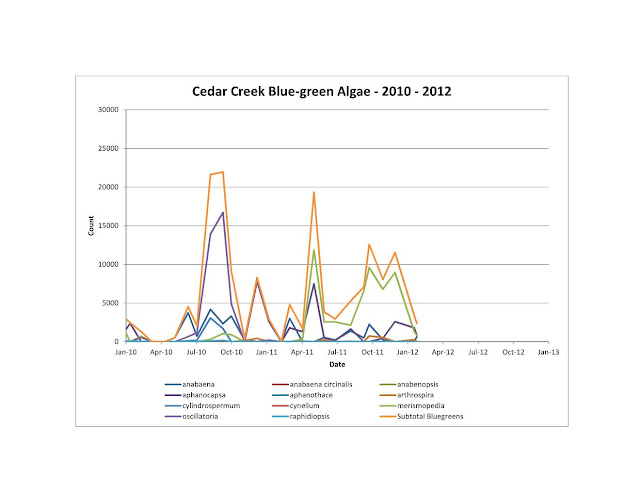I had hypothesized using different methods of indicating there is bio-activity in the pipeline.
Monitor Chlorine Residual - hypothesized faster chlorine decay means there is higher biological activity.
I could go more into chlorine decay with regard to biological activity but I think its already been established academically. The question, though, is how much is due to the biofilm and how much is due to algal activity. I can chase that rabbit trail, but my interests lie with the hydraulics. So why worry about biofilm growth? Because it directly impacts pumping systems. When we are designing pump stations
So a biofilm is a mass of cells located at solid/liquid boundaries that are held together with "a matrix of extracellular polymeric substance (EPS)". It's the EPS that really protects the bacterial cells and allows the cells to grow into colonies.
I do know that the two types of algae that are most prevalent when friction factors are high are blue-greens and diatoms. Here are some charts showing what types of algae has been found in both Cedar Creek and Richland Chambers.
But when I compared the information to friction factor, there is a definite correlation
I wish I had more frequent algal data. But this is still pretty good to see.
So I feel like I may be going in a direction. Quantify viscoelasticity of biofim based on velocity - could it relate to a hydraulic roughness?
From earlier unpublished thesis work:
The only immediate changes to the
friction factor occur with a pump combination change. The change could be due
to a change in velocity, which can affect the biofilm thickness. Faster flows
yield lower friction factors and visa-versa. The change in friction factors due
to pump combinations could be supporting evidence that the biofilm performs as
a viscoelastic medium. Biofilm formation could also be disrupted during pump
changes and the biofilm configurations may be rearranged due to higher shear
stresses occurring at the pipe wall during pump combination changes.
Which gets me back to basics.
So, do I try to quantify viscosity of water to algal count and tie it to friction factor? Or better yet, try to come up with a way to relate velocity/viscosity to hydraulic roughness. Since the biofilm is viscoelastic, can there be some type of factor that can relate hydraulic roughness to velocity?
Again, this would only be for large diameter pipe.











No comments:
Post a Comment